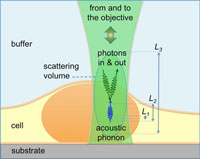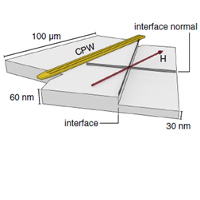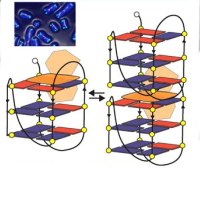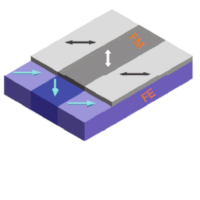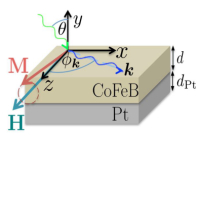1,4-Benzenedimethanethiol Interaction with Au(110), Ag(111), Cu(100), and Cu(111) Surfaces: Self-Assembly and Dissociation Processes
| Title | 1,4-Benzenedimethanethiol Interaction with Au(110), Ag(111), Cu(100), and Cu(111) Surfaces: Self-Assembly and Dissociation Processes |
| Publication Type | Journal Article |
| Year of Publication | 2014 |
| Authors | Jia, J, Giglia, A, Flores, M, Grizzi, O, Pasquali, L, Esaulov, VA |
| Journal | Journal of physical chemistry. C |
| Volume | 118 |
| Pagination | 26866–26876 |
| ISSN | 1932-7447 |
| Abstract | In this work, we study systematically the evaporative adsorption under high vacuum conditions of 1,4-benzenedimethanethiol (BDMT) onto different metal surfaces: Ag(111), Au(110), Cu(100), and Cu(111). The study is carried out by photoemission using synchrotron radiation. In the case of Ag(111) and Au(110), at low exposures, a lying down BDMT phase is formed, with both S atoms attached to Ag and Au. A standing up phase is attained after a large exposure, above several hundred thousand Langmuir. However, also a mixed complex over layer appears to be formed, attributable to molecules sticking on top of the SAM. In the case of Au(110), heating leads to BDMT desorption with some degree of SC bond scission, and some S atoms are left in different adsorption sites with mainly two different core level binding energies. On Ag(111), after heating the sample, BDMT desorbs and also sulfidation of Ag occurs. In the case of Cu(100) and Cu(111), SC bond cleavage occurs already after initial adsorption. Lost S from BDMT molecules is adsorbed on Cu. Surface passivation occurs and only then BDMT adsorption takes place, with an interface with Cu enriched with sulfur. |
| DOI | 10.1021/jp509184t |

